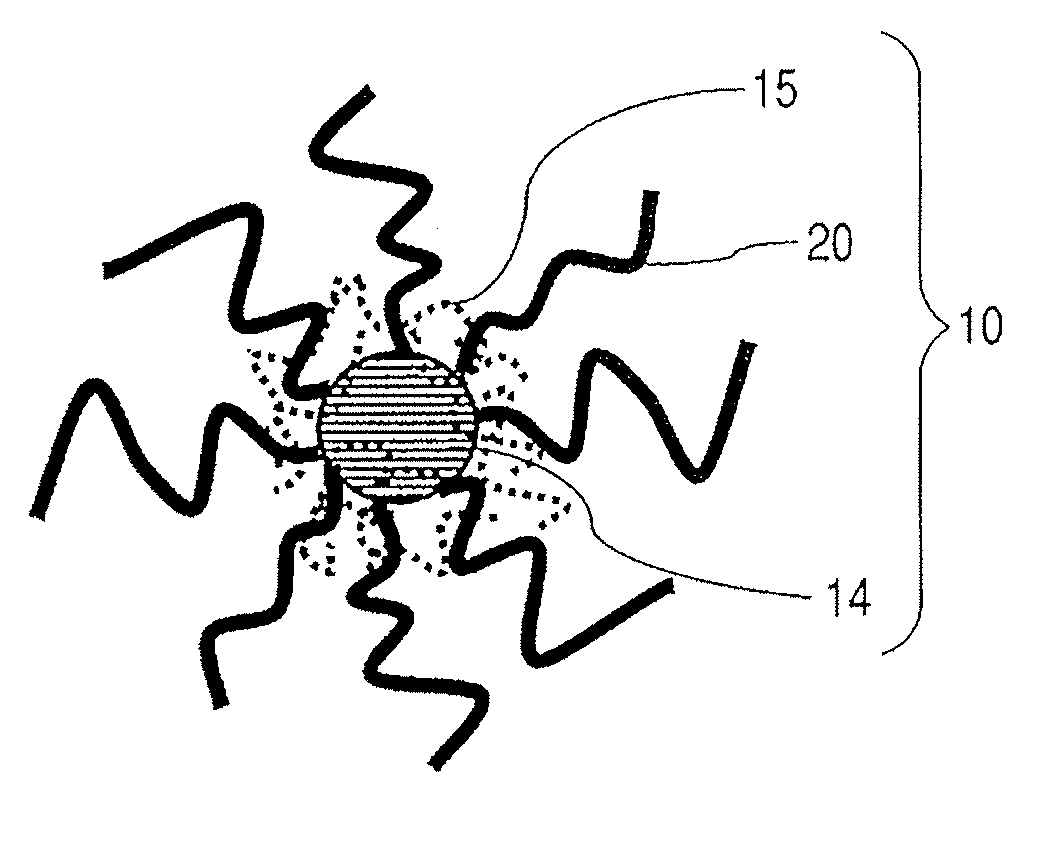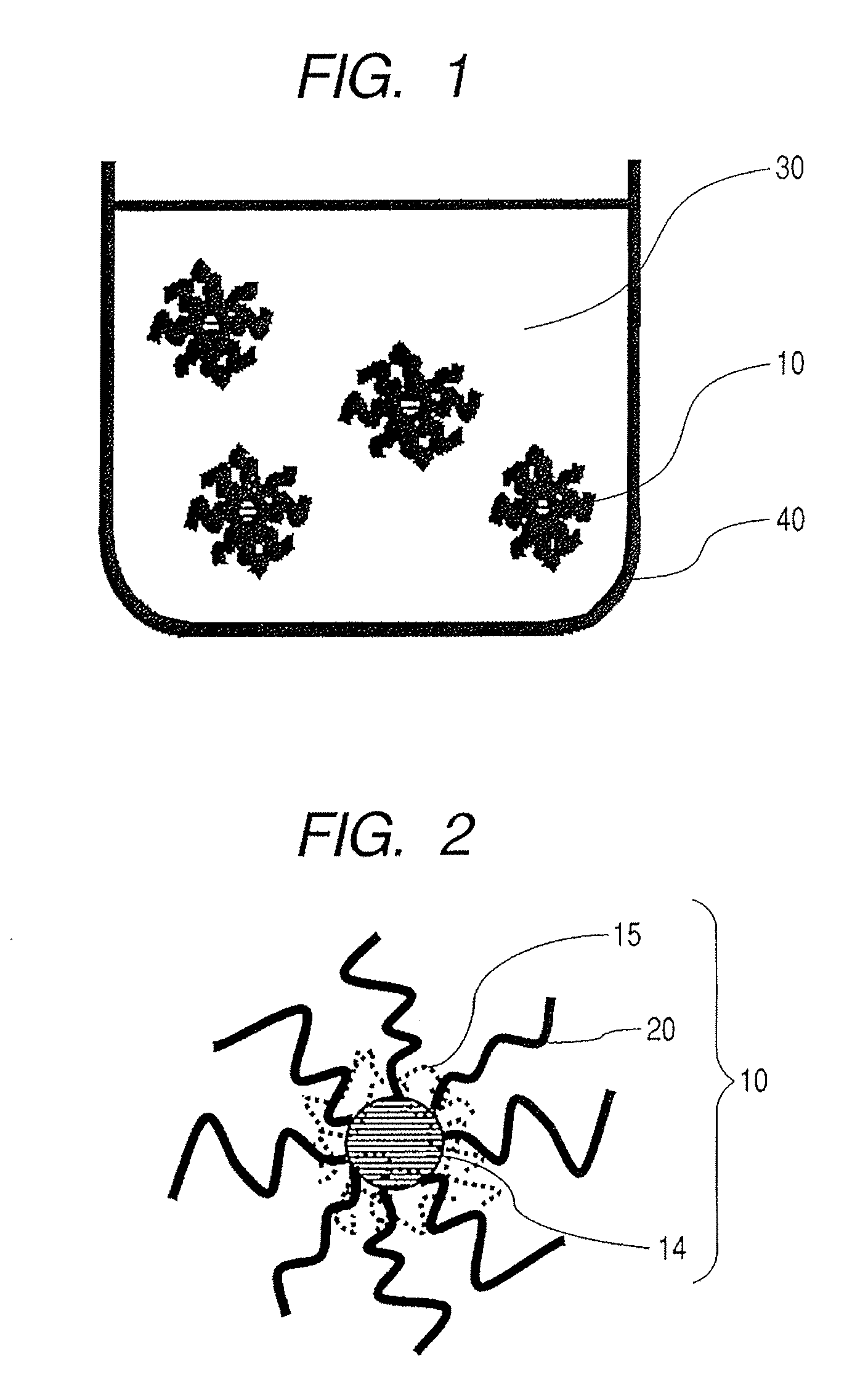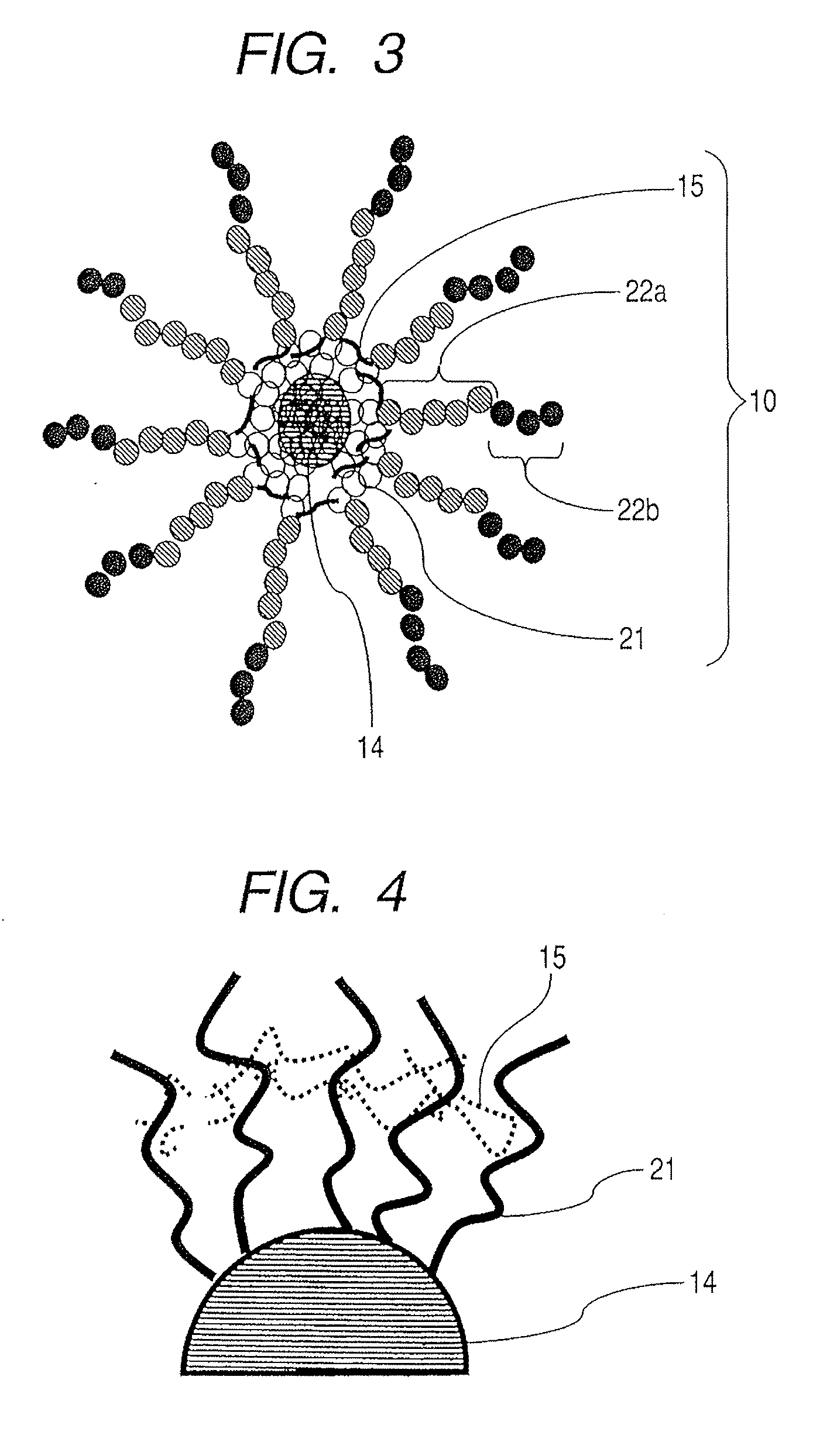Polymeric compound containing composition, and image forming process and apparatus
a polymer compound and composition technology, applied in the field of polymer compound and composition, can solve the problems of deviation of performance, insufficient crosslinking effect, etc., and achieve excellent glossiness and fastness properties, and excellent dispersion stability
- Summary
- Abstract
- Description
- Claims
- Application Information
AI Technical Summary
Benefits of technology
Problems solved by technology
Method used
Image
Examples
synthesis example 1
Synthesis of Block Polymer 1
ABCD Type
[0184]Polymerization was conducted in the following manner according to a publicly known cationic living polymerization.
[0185]After the interior of a glass container equipped with a three-way stopcock was purged with nitrogen, the container was heated to 250° C. under a nitrogen gas atmosphere to remove adsorbed water. After the system was returned to room temperature, 25 mmol (millimols) of 4-methylbenzeneoxyethyl vinyl ether (TolOVE), 160 mmol of ethyl acetate, 0.5 mmol of 1-isobutoxyethyl acetate and 110 ml of toluene were added to cool the reaction system. At the time the temperature within the system reached 0° C., 2.0 mmol of ethylaluminum sesquichloride (equimolar mixture of diethylaluminum chloride and ethylaluminum dichloride) was added to initiate polymerization. The polymerization reaction was monitored by means of gel permeation chromatography (GPC) to confirm that the polymerization of a block A had been completed. At this stage, Mn ...
synthesis example 2
Synthesis of Block Polymer 2
ABC Type
[0190]Synthesis was conducted in the same manner as in Synthesis Example 1 except that the monomers of the respective components were changed as described below. As the monomers for the block A, were added 50 mmol of TolOVE and 50 mmol of VEMA. As the monomer for the block B, was added 50 mmol of methoxyethoxyethyl vinyl ether (MOEOVE). As the monomer for the block C, was added 10 mmol of t-butyldimethylsilyl 4-{(vinyloxy)ethoxy}benzoate (VEEtPhCOOTBDMSi). The other processes than the above is the same as in Example 1. The identification of this block polymer was conducted by means of NMR and GPC. Mn was 43,700, and Mw / Mn was 1.17. The polymerization ratio of A:B:C was 100:100:20, and the compositional ratio TolOVE:VEMA in the segment A was 5:5.
[0191]The thus-obtained block polymer was subjected to a post treatment in the same manner as in Synthesis Example 1 to obtain Block Polymer 2 in which the side chain of the block C is in the form of sodium...
synthesis example 3
Synthesis of Block Polymer 3
[0192]Polymerization was conducted in the same manner as in Synthesis Example 1 except that the monomers of the respective components were changed. First of all, the monomers for the component A were changed to 35 mmol of TolOVE and 15 mmol of VEMA. As the component B, was added a toluene-diluted solution of 50 mmol of MOEOVE and 10 mmol of VEEtPhCOOTBDMSi. The other processes than the above is the same as in Example 1. The identification of this block polymer was conducted by means of NMR and GPC. Mn was 33,900, and Mw / Mn was 1.19. The polymerization ratio of A:B was 100:120, the compositional ratio TolOVE:VEMA in the segment A was 7:3, and the compositional ratio MOEOVE:VEEtPhCOOTBDMSi in the segment B was 5:1.
[0193]The thus-obtained block polymer was subjected to a post treatment in the same manner as in Synthesis Example 1 to obtain Block Polymer 3 in which the side chain of the block B is in the form of sodium carboxylate. It was also confirmed by NM...
PUM
| Property | Measurement | Unit |
|---|---|---|
| solubility | aaaaa | aaaaa |
| temperature | aaaaa | aaaaa |
| temperature | aaaaa | aaaaa |
Abstract
Description
Claims
Application Information
 Login to View More
Login to View More - R&D
- Intellectual Property
- Life Sciences
- Materials
- Tech Scout
- Unparalleled Data Quality
- Higher Quality Content
- 60% Fewer Hallucinations
Browse by: Latest US Patents, China's latest patents, Technical Efficacy Thesaurus, Application Domain, Technology Topic, Popular Technical Reports.
© 2025 PatSnap. All rights reserved.Legal|Privacy policy|Modern Slavery Act Transparency Statement|Sitemap|About US| Contact US: help@patsnap.com



